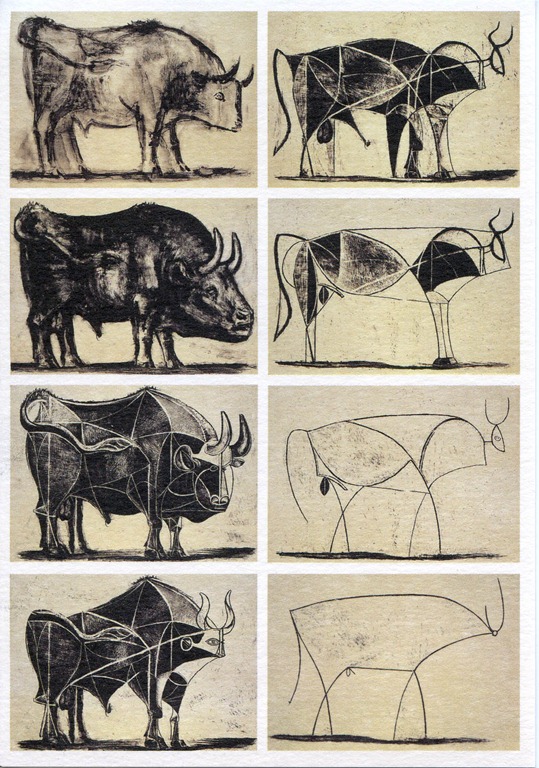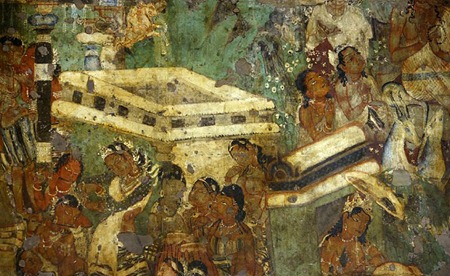Turns out the cavemen didn’t live like this, after all.
If you live near a cinema that’s showing it, I recommend getting down there to watch the Werner Herzog documentary Cave of Forgotten Dreams. Herzog has filmed the beautiful cave paintings in the Chauvet Cave and, unless you’re the world’s top paleohistorian, this film is the only way you’re likely to experience them.
In many ways it’s a very straightforward movie. Herzog shows the paintings in all their prehistoric resplendence and never once masks his own awestruck reaction. This approach is, of course, entirely to his credit. He gets the best out of the paintings by devoting the screen to them.
If there is an argument for watching the latest blockbuster at the cinema in order to better enjoy the scope of its special effects, there is an even stronger argument for watching Cave of Forgotten Dreams on the silver screen. It is, after all, the closest you can get to seeing these bulls, horses and lions as the painters intended them: on a wall.
For me the stand-out image from the cave is an eight-legged bison. The archaeologists don’t think it represents a mythical beast, but that the eight legs are in fact a cunning form of animation. This bison would have been viewed under flickering firelight, which in turn would have diffracted off the surface of an underground pool. All of that light, all a-shimmer, would have turned those eight legs into just four, given the illusion of galloping.
I’ve been bookmarking web sites about rock art for a while, ever since I saw a quote from Picasso saying that ‘after Altamira, all is decadence.’ It turns out that Picasso probably never said anything of the sort, but that’s beside the point. As this film so fabulously demonstrates, these cave painters were not thugs with clubs. They were staggeringly precise figurative artists, they were animators, they were human beings just as complicated as those of the twenty-first century.

Here are some other bits and pieces about caves that I’ve bookmarked. I love these underground wonders. If any of you know of anything similar, I’d love to hear from you.
Lascaux
This is by far and away the best site I have found for prehistoric rock art. A virtual video tour takes you from The Unicorn Panel to The Panel of the Wounded Man in the Lascaux Cave, France. You glide from chamber to chamber, and you can pause and examine in detail each image that you pass. Click on the unicorn to see what I mean.
Ajanta
The Ajanta Caves are the rock art equivalent of new-builds, since they only date back to 200BC (Lascaux is about 17,000 years old, Chauvet between 26,000 and 32,000). Another big difference is that they’re man-made, but they’re beautiful nevertheless, as this NYT article by Simon Winchester describes. Click on the image below to hear him talk about Ajanta.
UNESCO’s Patrimonium-mundi project has given us the chance to view some of Ajanta’s caves in 360 degrees. Click here to see cave 6, and click ‘Ajanta’ at the bottom of that screen to go back to the index of Ajanta caves. Also worth the effort of a finger-click is the green-and-white UNESCO logo in the bottom left, which will transport you to one of 275 random World Heritage Sites that have been photographed for the project.
Han-sur-Lesse
These two old films from British Pathé are good fun. For the most part they show people carrying flares through underground passageways – a practice which is presumably prohibited these days. Still, it’s the flares which make these films special, swathing the cave ceilings with smoke.
The Tahtzibichen Labyrinth
These Mayan caves are underwater, but filled it seems with statues and artefacts that may once have demarcated the entrance to the underworld. It’s hard to find out many facts about the place, but everybody loves a good mystery. Here is a National Geographic article about the caves.




Hi Ali,
have you hear of Creswell Crags? Its a cave system in Derbyshire that contains Britain’s only known rock art. Its not on the same scale or detail as Lascaux but you can see images of deer and birds that were carved around 13,000 years ago.
Hi Sarah,
I’ve written Creswell Crags into my list of places to try to go this year. Thank you for the tip-off, it looks like an amazing place.
Ali